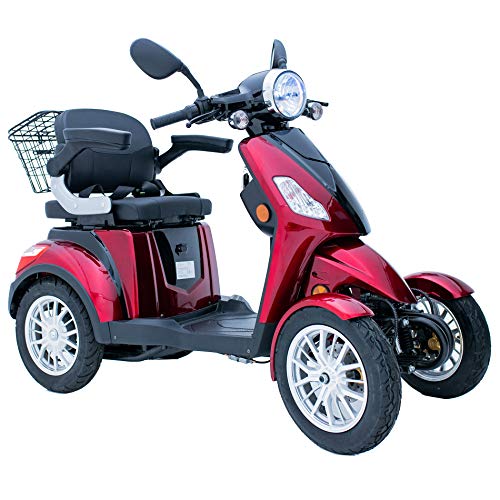Scooter Green Power
Scooters are fun and safe way to travel. They are also eco sustainable. It's important that you do your research prior to purchasing one.
Scooters are not carbon-free as they appear. They come with hidden costs. The production and mining processes used by the batteries used to power electric scooters create significant emissions. Transporting scooters from places where they are used to charging stations adds to their environmental footprint.
Battery Life
The battery is among the most important components of any scooter, and it has a big impact on how green your scooter is. When a battery dies, it releases toxic chemicals, which could have a massive ecological and economic impact.
Electric scooters are extremely energy efficient. They use only a fraction of what cars do to travel the same distance. This can help reduce carbon dioxide as well as climate change and traffic congestion. However, they still produce some carbon dioxide when charging. If green energy mobility scooters is from renewable sources, this could make e-scooters more eco-friendly.
In addition to this, many scooters have swappable batteries that can be used in conjunction with other scooters in a fleet, which reduces the need for companies to transport them for recharging. Some companies are also testing hyper-local energy production. power mobility could use the batteries' power to balance the demand and supply.
If you are planning to use your scooter for long journeys, consider buying a larger battery or a second that you can swap out. This will allow you to go further without stopping to recharge the battery as often. This is particularly important if you reside in a region that has extreme weather conditions. It is also a great idea to charge the battery before you store it for months or even weeks. Inadequately doing this could cause the battery to stop holding a charge when you require it, which can be inconvenient and even dangerous.
Overall, electric scooters are much greener than other vehicles or modes of transportation. They emit less greenhouse gases that contribute to global warming and require less raw materials to make. They can also be powered by clean energy which could significantly reduce their carbon footprint. When contemplating the durability of a scooter, it's important to take into account its entire lifecycle. This includes the process of manufacturing and the energy required to charge it, as well as its disposal.
Design
The design of electric scooters could have a significant impact on their green power capabilities. Scooters that have regenerative brake systems, like they convert the energy that would be lost otherwise into extra battery life, allowing them to travel farther on each charge. Many scooters can also be designed to travel shorter distances to reduce the number of car trips required. And, unlike traditional vehicles, scooters emit no carbon dioxide during use.
It is essential to take into account the environmental impacts of electric scooters' whole life-cycle. This includes the extraction of raw materials, manufacturing and the disposal at the end of life. The manufacturing of lithium-ion batteries is particularly energy-intensive, and could lead to habitat destruction, soil and water pollution as well as greenhouse gas emissions. In addition, transportation and mining of raw materials can be a significant threat to the environment.

Another major problem with scooters is their inability to last. The average scooter lasts only several months on the street before it is discarded. This can force scooter companies to extract more aluminum and engage in more resource-intensive tasks such as shipping. Since the majority of scooters are rented, not owned, the scooters must be collected and transported to charging stations (often by automobiles) when they are empty of juice.
In the event of a end of life disposal, scooters can contain hazardous waste that could cause harm to the health of the public and the environment. If the waste isn't properly recycled, it could end up in landfills and rivers, where humans as well as wildlife are at risk.
While scooters are generally better for the environment than conventional vehicles, there are still some issues that must be addressed to ensure that they are completely eco-friendly. If all scooters were made with 100% recyclable materials, and if the electricity they ran on was sourced from renewable sources, then they would be a carbon-free mode of transport.
Maintenance
A scooter powered by electricity may be less expensive than a conventional car but it requires regular maintenance. The primary component is the battery pack. It needs to be recharged regularly and replaced when it is nearing the end of life. This is also dependent on the speed controller. If the speed controller is not functioning properly it can affect the performance of the scooter.
If the scooter stops or stops working when riding, it usually indicates that the battery is not working properly. It could also be a fuse or a charger that doesn't work properly. Check that the charger's lights are green (charging), not red (off). Even if you don't use the scooter, it's an ideal practice to charge it every when it is in storage.
Another issue that is common is a faulty normally closed brake lever switch. To test this, disconnect the wire from the brake switch and then connect the terminals to the controller connector, where the wire was unplugged. If the scooter continues to run, the switch may be defective.
Scooter services send people out to drive cars and trucks all day long, and then bring back any electric scooters that are out of juice. This service allows them to keep their fleet in good working condition. It also allows them to charge the batteries for the next trip. However, many consumers do not have this option and must change their scooters in the event that they run out of juice while on the move.
